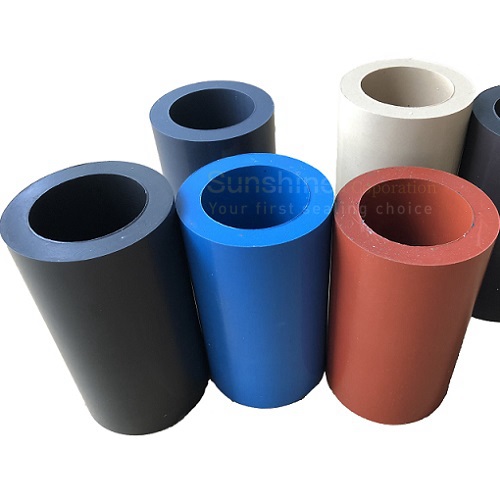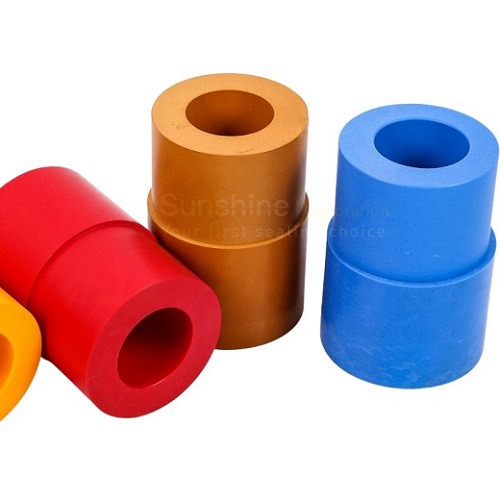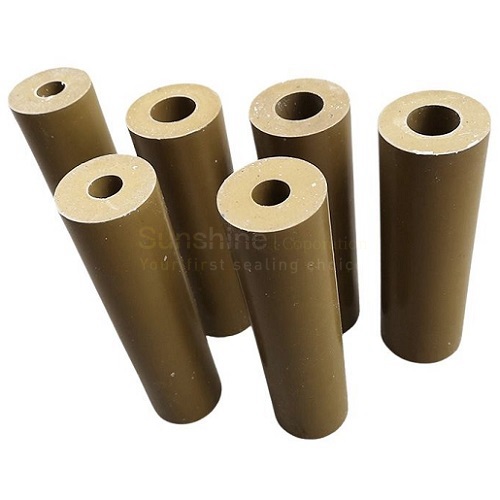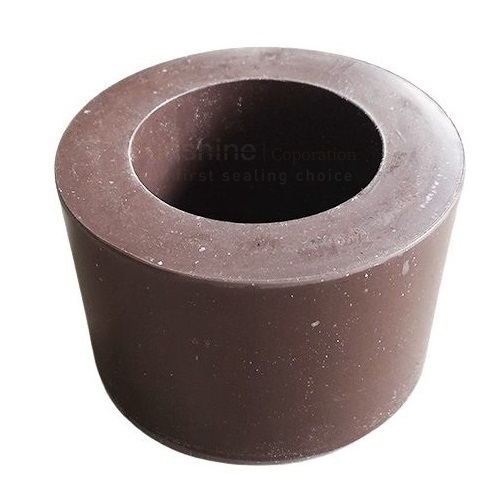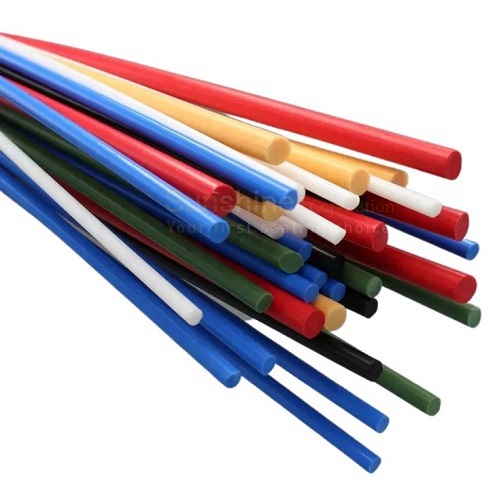
Fiberglass Filled PTFE Rod
Fiberglass Filled PTFE Rod has great wear resistance, creep properties than normal PTFE
PDF DownLoad
Content
What is Fiberglass Filled PTFE Rod?
Fiberglass filled PTFE rod is made of PTFE powder mixed with 3% to 25% glass fiber, so fiberglass filled PTFE rod has enhanced strength, the least effect on chemical and electrical properties and add greatly to the mechanical properties of unfilled PTFE products. Addition of fiberglass improves compressive properties by as much as 25%.Why We Use Fiberglass Filled PTFE Rod?
The reason why we use fiberglass filled ptfe rod is that it has extremely good chemical resistance, good sliding properties, improved dimensional stability and enhanced creep resistance. Fiberglass filled PTFE rod also has very good electrical insulation properties.Applications of Fiberglass Filled PTFE Rod
Fiberglass filled PTFE rod can be used for pump housings, valve seats, gaskets, roller coverings, shaft bearings, filter housings, etching plates, shaft seals, slide runners, chemical engineering, machine parts, transport and conveyor technology, pump and instrument construction, electrical industry, electronics, laser technology, fume purification, pure water production, cryogenics, filter technology, food and medical technology.
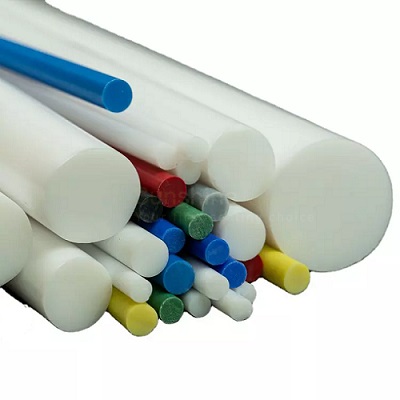
What Size We Can Make?
2mm to 6mm Diameter7mm to 50mm Diameter
55mm to 160mm Diameter
160mm to 350mm Diameter
Percentages of Fiberglass available with PTFE
GL7504 - 4% Fiberglass Filled PTFE RodGL7505 - 5% Fiberglass Filled PTFE Rod
GL7510 - 10% Fiberglass Filled PTFE Rod
GL7515- 15% Fiberglass Filled PTFE Rod
GL7520 - 20% Fiberglass Filled PTFE Rod
GL7525 - 25% Fiberglass Filled PTFE Rod
Fiberglass Filled PTFE vs Virgin PTFE
Virgin PTFE or pure PTFE has a range of benefits. One small area of weakness though is that its propensity to experience creep at low and high temperatures when being used for sealing. Adding fiberglass mixed with PTFE helps alleviate this.The fiberglass in PTFE also increases the materials capacity to withstand wear and friction over time.
Of course, adding fiberglass with PTFE changes the properties of the PTFE material. Fortunately, there are only a few drawbacks. Chemical resistance is still outstanding, though fiberglass filled PTFE should not be exposed to fluoridric acid.
Some mechanical properties also change with the largest impact experienced in tensile strength. This drops from about 20 mpa for Virgin PTFE to 13 mpa for 25% fiberglass Filled PTFE. Most other attributes, including UV Resistance, temperature resistance and dielectric strength are largely unaffected or only nominally so.
Technical Data of Fiberglass Filled PTFE Rod
|
Properties |
Test Methods |
Typical Value |
Test Unit |
| Density |
ASTM D792 |
2.25 |
g/cm3 |
| Hardness shore D | ASTM D2240 | ≥ 58 |
Sh.D |
|
Tensile strength |
ASTM D4894 |
18 - 21 | Mpa |
| Elongation at break 23°C |
ASTM D4894 |
210 |
% |
| Coefficient of dynamic friction | ASTM D1894 | 0.13 |
- |
|
Flammability |
UL 94 |
V-0 | - |
| Thermal conductivity 23°C | DIN 52612 | 0.42 | W/K.m |
| Water absorption Max | ASTM D570 | 0.015 |
% |
| Working temperature | - | -200 to 260 | °C |
Related Category
Fiberglass Filled PTFE
Bronze-filled PTFE
Polyimide Filled PTFE
Carbon Filled PTFE
Ekonol Filled PTFE
PEEK Filled PTFE
Graphite Filled PTFE
MoS2 Moly Filled PTFE
Related Products


